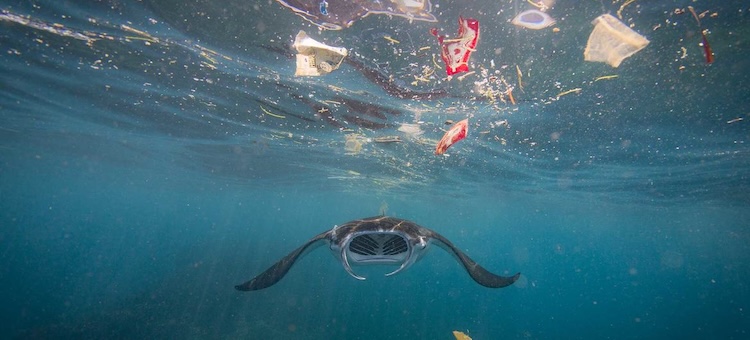By Jonathan Power*
LUND, Sweden | 11 June 2025 (IDN) — David Attenborough said in his wondrous new documentary film, “Ocean”, it had taken him a long time in his 99 years of life to understand that for the survival of our planet the oceans are more important than the land.
This week as we watch President Donald Trump send the army into the downtown streets of Los Angeles very few of us are thinking about the sea and oceans, yet on Monday (9 June) in Nice, France, the UN opened its conference on the oceans for the purpose of “Accelerating action and mobilizing all actors to conserve and sustainably use the ocean”.
So disdainful is Trump about this UN effort he is not even sending a delegation. Yet the last Republican president before Trump, George W. Bush, announced that, if elected, he would move to ratify the UN’s Law of the Sea. He never did, outvoted by Republican isolationists. The same happened to Barack Obama. His secretary of state Hillary Clinton, flanked by the senior brass from the military, announced that the Administration was immediately going to push Congress to vote for the long-delayed ratification of the treaty. They failed.
Most countries in the world are committed to caring for the seas and oceans and have been for a long time ever since the Law of the Sea was founded in 1982. Until the Law of the Sea was drafted the seas and oceans around us, two thirds of our planet, were largely lawless. When 350 years ago the Dutch jurist, Hugo Grotius, formulated the doctrine of the freedom of the seas, letting things be seemed a magnificent idea: “Let no man possess what belongs to every man.”
The age of giant tankers
But this is the age of giant tankers, oil spills that destroy whole coasts, declining fish catches, disputes over the rights of passage and maybe the beginnings of a gold rush for minerals and genetic resources on the bottom of the sea.
After 26 years of negotiation in which America played an active part the Law of the Sea came into force—even without the US enough states had ratified it for it to become operational. It was an historic milestone in the annals of nation state competition and commercial exploration. It gave the world a chance to arrange for mankind a fair distribution of its common patrimony of the seas. It has the chance of establishing precedents that could be applied to other endeavours like the slicing up of oil-rich Antarctica and Arctic Ocean, currently being disputed by nations as diverse as Denmark and Russia, the future frontiers of the moon, the planets and outer space. This is why some say it is, in its own way, a Magna Carta for the 21st century.
It was a Republican president, Richard Nixon, who first coined the term to describe the seas as “the common heritage of mankind”. Nixon’s attitude was anomalous- the U.S. attitude to international law had long been ambiguous and uncertain.
President Harry Truman was the first to challenge the conventional wisdom then reigning as laid down by Grotius. In 1945 he proclaimed US jurisdiction over the seabed resources of the continental shelf. Three years later, Chile Peru and Ecuador raised the stakes by claiming 20-mile maritime zones and seizing American tuna boats fishing in their waters. The fear was that nations might go further and declare exclusive 200-mile territorial waters.
High seas freedom
It was in an attempt to find some accommodation among these new coastal jurisdictions and traditional high seas freedom that the Law of the Sea conference was convened. The result was one of the great negotiating texts of all time- far more comprehensive, detailed and demanding of shared sovereignty than that for the International Criminal Court. It weighs the interests of continental nations like the U.S. and Russia, islands like Sri Lanka and Jamaica and landlocked states such as Austria and Chad.
The treaty rolls back existing claims of territorial jurisdiction wider than 12 miles. It writes into international law the right to free and unimpeded passage through the 100 straits that are narrower than 24 miles. (This is one reason why the Pentagon has long been firmly on the side of the treaty following a series of disputes including one with good neighbour, Canada, over the Northwest Passage, now steadily becoming ice-free.) And the treaty, while recognizing exclusive 200-mile economic zones for coastal states, does not allow them to restrict the passage of ships or the over-flight of planes of other nations.
Once the US ratifies the treaty the pressure will be on the few other dissenting states to ratify.
China, despite its nervousness about recognizing a treaty that would give the US navy the undisputed right to patrol the Taiwan Strait, has ratified it but has also ignored it in the South China Sea. More the pity that the Law of the Sea does not address territorial disputes that were underway before it was negotiated – like who controls the Spratly Islands that pits China against Vietnam, Taiwan, and the Philippines. Future amendments of the treaty must deal with that.
The Nice conference was supposed to bring pressure on the US to ratify the treaty. Alas, with the spotlight on the army patrolling Los Angeles, all eyes are looking westward. Yet another setback for those fighting to save our seas and to conserve our land.
*Jonathan Power has been an international foreign affairs columnist for over 40 years and a columnist and commentator for the International Herald Tribune (now the New York Times) for 17 years. [IDN–InDepthNews]
Copyright © Jonathan Power
Visit www.jonathanpowerjournalist.com
Image: Up to 12 million metric tons of plastic enter the ocean every year — the equivalent of a garbage truck every minute. © The Ocean Story / Vincent Kneefel


